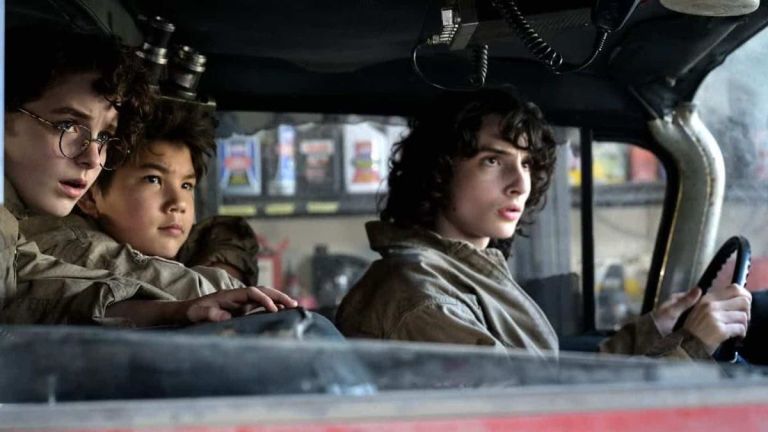Hollywood’s obsession with reboots has given birth to one of its worst yet, Ghostbusters: Afterlife. Arriving in theatres across North America on Nov. 19, this long-delayed film might have been better off going straight to video-on-demand. Although director Jason Reitman is the son of the original installment director Ivan Reitman, Ghostbusters: Afterlife reinscribes the sarcastic comedy of the original movies into a cheesy story about friendship and family values. With an astounding 124-minute runtime, the movie spends nearly half of this without any significant plot development—it focuses more on self-referential jokes than it does trying to build its own plot.
The film follows Callie (Carrie Coon), a single mom struggling to make ends meet. After her estranged father dies, she moves her family into his old farmhouse near a small mining town to the disdain of her children, Trevor (Finn Wolfhard) and Phoebe (Mckenna Grace). As they sort through the rubble of their grandfather’s life, Trevor and Phoebe discover their connection to the original Ghostbusters and the secrets their grandfather left behind. In order to solve the mysteries and save the world from impending doom at the hands of a demonic ghost, they need a little help from fan favourites like Peter Venkman (Bill Murray) of the original series.
Avid fans of the franchise will immediately notice that the film largely ignores the original sequel as well as the 2016 reboot. Ghostbusters: Afterlife attempts to create a more dramatic take on the beloved franchise, but the result diverges too far from the source material. Lacking the signature comedic style from the 1984 film, Ghostbusters: Afterlife feels less like a faithful sequel and more like an attempt to capitalize on the nostalgia and success of the original film. It turns a beloved fantasy-comedy into what more closely resembles a melancholic family drama.
Most of the members of the family completely lack any personality and complexity. Callie receives next to zero screen time after her introduction and Phoebe’s newfound friend is so single-minded, his name is literally just his hobby: Podcast (Logan Kim). Trevor and Phoebe are nothing more than the tired archetypes of the belligerent teenager and the overly precocious younger sibling. That being said, both young actors do a fairly good job with the dry material they were given. Grace plays possibly one of the most annoying child geniuses ever seen on film, but excellently portrays Phoebe’s growing connection with her grandfather, and Wolfhard is a bonafide veteran of the genre. His competence in making the absurd sound realistic almost allows the audience to suspend their disbelief.
Even the ghosts in Ghostbusters: Afterlife are an uncanny shell of the original franchise, using undoubtedly some of the worst CGI in recent memory. Using a strange combination of practical effects and green screens, the film looks cheap. All attempts at suspense, terror, or seriousness are dampened by the appearances of cartoony ghosts. Straddling its identity between that of a thriller and a cartoon, the film can’t decide whether it wants its audiences to laugh at, or be scared of, the supernatural.
Ghostbusters: Afterlife epitomizes the rationality behind why reboots should end: It is impossible to recapture the magic of the original franchise. The film is purely trite ‘80s nostalgia packed with callbacks to the original, but nothing more. With a weak plot, hackneyed dialogue, and an awful combination of bad CGI and SFX, the film fails to recapture the charming cynicism of its predecessor.








